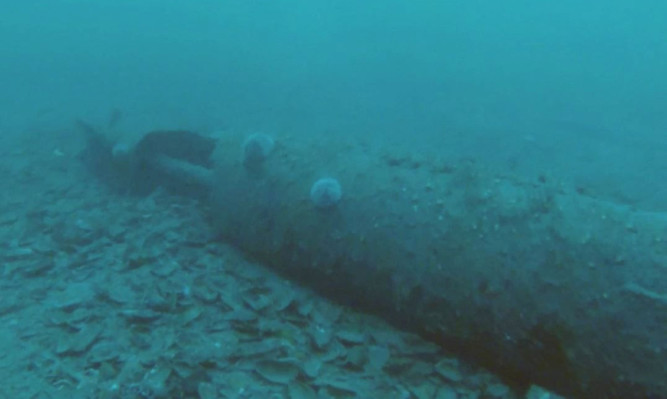A seven-metre torpedo found on the seabed in Scapa Flow is believed to have been fired at HMS Royal Oak by a German submarine at the beginning of the Second World War.
The device was spotted during a routine sonar survey carried out by Sula Diving on Saturday for Orkney Islands Council.
Royal Navy divers travelled to the area from their Faslane base on the Clyde to examine video footage of the torpedo and inspect it on the seabed.
Ships have been warned not to drop anchor in the area and divers were told to avoid it, but the object is said to be of no threat.
Navy divers marked its location and are to return later to dispose of it.
Scapa Flow, off Orkney, was used as a Royal Navy base in both world wars and is now popular with divers due to the British and German relics lying on the seabed.
More than 50 German ships were deliberately sunk in the area at the end of the First World War by their commanders to stop them being divided among the Allies.
It is also the site of the wreck of HMS Royal Oak, a Revenge class battleship that was torpedoed by a German U-Boat on October 14, 1939, with the loss of 883 lives.
Experts believe the torpedo found in February is linked to that attack.
Brian Archibald, Orkney Island Council’s harbour master, said: “Now that we know that the torpedo is German, we believe it is highly likely that it was among those fired at HMS Royal Oak by the U47 in October 1939.
“It’s location in Scapa Flow is in the vicinity of the area where, from historical accounts, U47 is thought to have carried out the attack.”
Lieutenant Commander Tony Hampshire said the dive to examine the torpedo was an especially poignant one for his Northern Diving Group team as members of the unit travel to Orkney each year to visit the wreck of the Royal Oak in an act of remembrance.
He said: “Northern Diving Group has the honour of diving and placing the White Ensign on the wreck of Royal Oak.
“It is a task which the group has conducted for many years and one which we are proud to participate in.
“To think that this torpedo could have been one fired at HMS Royal Oak brings the tragedy home. Those who served with the ship were incredibly brave individuals.”
He added: “While it wouldn’t be safe to preserve the torpedo whole, once we return to the scene we will explore the possibility of preserving one of the fins or perhaps a propeller blade for historical interest.”
Following discussions with the Royal Navy team, the no-anchorage area already in place around the area where the torpedo was found is to be reduced to a 500-metre radius, with diving also prohibited.
